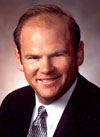
 Feb. 3, 2010 – In 2001, Congress enacted significant tax legislation that repealed the estate tax from Jan. 1, 2010 to Dec. 31, 2010. By failing to modify the 2001 tax legislation, Congress has forced each estate planning practitioner to change his or her approach to ensuring that estate plans carry out the clients’ intentions. In addition to the transfer tax repeal, Congress added new basis rules that change the way the income tax basis is determined when property is acquired from a decedent. Income tax basis is used to calculate the gain or loss on the sale of inherited property, and in some cases to compute income tax deductions for future depreciation expense. This article provides an overview of the new testamentary tax basis rules.
Feb. 3, 2010 – In 2001, Congress enacted significant tax legislation that repealed the estate tax from Jan. 1, 2010 to Dec. 31, 2010. By failing to modify the 2001 tax legislation, Congress has forced each estate planning practitioner to change his or her approach to ensuring that estate plans carry out the clients’ intentions. In addition to the transfer tax repeal, Congress added new basis rules that change the way the income tax basis is determined when property is acquired from a decedent. Income tax basis is used to calculate the gain or loss on the sale of inherited property, and in some cases to compute income tax deductions for future depreciation expense. This article provides an overview of the new testamentary tax basis rules.
New treatment of basis
Under the old rules, the income tax basis of property inherited from a decedent was generally “stepped-up” to its fair market value on the date of the decedent’s death. Under the new rules, as a substitute for the estate tax exemption, each decedent’s estate is allowed $1.3 million of basis increase potential, which may be allocated to individual assets. There is also an additional spousal basis allocation of $3 million available for the executor to appoint to assets passing to a surviving spouse, either outright, or in certain types of trusts.
Apparently, the basis adjustment rules were designed to relieve the unfairness of taxing assets twice – first an estate tax at the death of the decedent, and then a capital gains tax at subsequent sale of the asset. Under this logic (and that of the 2001 tax legislation), upon reinstatement of the estate tax (either retroactively by Congressional action in 2010, or as legislated in 2011), the carryover basis rules will only apply during any period in which the estate tax is actually repealed (i.e., in calendar year 2010 under current legislation).
In Wisconsin, and other community property states, the Jan. 1, 2010, elimination of testamentary basis step-up is particularly troubling because of special income tax provisions that formerly allowed both the decedent’s and the survivor’s undivided one-half interest in marital property to be stepped-up at death (the so-called “dual step-up” rule).
At center stage in 2010 is Internal Revenue Code (IRC) Section 1022, which states that a decedent’s basis in appreciated property will remain equal to the decedent’s basis in the property, if the fair market value of the property on the date of death is greater than the decedent’s basis. If the fair market value at death is less than the decedent’s basis, the basis is lowered to the fair market value on the date of death, just as it would have been under the old law.
An overview
With that in mind, here is an overview of the 2010 modified carry-over basis system:
Estates of decedents dying in 2010 are able to step up the basis of assets transferred, but only to a $1.3 million limit;1
The basis of property transferred to a surviving spouse may be increased by an additional $3 million, or $4.3 million in total.2
The basis may never be adjusted above its fair market value on the date of the decedent’s death;3
The executor elects which assets receive an increase in basis and the extent to which each asset is adjusted.4
Of course the most beneficial aspect of the repeal is that there is no estate transfer tax or generation skipping transfer tax in 2010, but on Jan. 1, 2011, that all changes reverts back to the way things were in 2001.
Carry-over basis background
This isn’t the first time that our tax laws have had a carry-over basis treatment at death. In 1976, Congress repealed the basis step-up rules.5 After much criticism for the change, Congress retroactively repealed the carry-over basis in 1980.6 Unified rates as applied to transfers by gift are still intact, though the rates have changed in 2010.7
Basis of property acquired from a decedent
Under the new 2010 modified carry-over basis regime, an executor may increase the decedent’s basis up to $1.3 million. The adjustments will be increased for any unused capital losses and net operating losses of the decedent. This new basis is allocable on an asset-by-asset basis.
Under the new basis allocation rules, at least two unintended consequences result. First, there is an obvious record-keeping problem for taxpayers who have lived with step-up basis rules for decades and have probably failed to properly substantiate basis, assuming that it would be stepped up at death. The other consequence is that the executor has a new duty of care, as a fiduciary of the estate, to (a) ensure the basis is properly allocated; and (b) that the basis is allocated to the proper assets. The executor is, therefore, put into a position of conflict between beneficiaries who are set to inherit assets as s/he, alone, determines the basis allocation.
The executor must also be careful as certain assets cannot receive basis step up. An in-depth discussion of these exceptions is beyond the scope of this brief article. However, the carved-out assets include property acquired by the decedent by gift (other than from a spouse) during the three years before death; property that constitutes a right to receive Income in Respect of a Decedent (IRD), and certain foreign entities.
The basis of marital property becomes problematic. The executor, again, is placed into the position of allocating basis. This time, up to an additional $3 million of basis is to be allocated to assets transferred to the surviving spouse. The problem occurs because the executor cannot anticipate which assets will have valuation increases or valuation decreases after the property is distributed to the spouse or other beneficiaries. For example, if depreciated real estate was part of the estate, when the heir sells that property, depreciation recapture would apply to recharacterize a portion of the gain, absent allocation of basis adjustment by the executor.
All of the above analysis assumes that the decedent is a United States citizen. For decedents who are not residents of the United States, the basis increase is only $60,000.8
Reporting requirements
As part of the executor’s duty (or the trustee of a revocable trust), information returns are now required to report non-cash assets in excess of $1.3 million and appreciated property whose value exceeded $25,000 received by the decedent within three years of death.9
In addition, the executor is required to furnish the following information:
Name and taxpayer identification number of the recipient of the property;
Accurate property description;
Adjusted basis of the property in the hands of the decedent and its fair market value at the time of death;
Decedent’s holding period;
Sufficient information to determine whether any gain on the sale of the property will be treated as ordinary income (e.g., recapture);
The amount of basis increase allocated to the property;
Other information as may be required by the Secretary of the Treasury.
As with any rule, there needs to be teeth to enforce the requirement. In this case, any person who is required to report to the IRS transfers at death will face a $10,000 penalty for failure to do so if the reporting obligation pertained to noncash assets in excess of $1.3 million. If the person violates the rule to report the receipt by a decedent of appreciated property valued at more than $25,000 within three years of death, s/he will be subject to a $500 penalty. There is also a $50 penalty for each failure to report information to a beneficiary. Reasonable cause is a defense to these penalties. For those individuals who intentionally disregard the rules, an additional penalty will be 5 percent of the fair market value of the property for which reporting was required.
Conclusion
The repeal of the estate tax in 2010 changes estate planning for all practitioners. It is likely that Congress may still repeal the 2001 legislation creating this new modified carry-over basis regime. However, Congress is also very busy with other pressing matters and previous attempts at change have failed. It is important that we understand and operate under the tax laws as they are written today and anticipate that the easiest path for Congress is to simply do nothing. Estate planners should strongly consider incorporating flexibility into all estate plans. Additionally, clients need to be counseled to not modify or reduce insurance trust provisions and coverage until there is more certainly as to the future of transfer taxes.
There are substantial opportunities for clients to take advantage of the new testamentary basis rules. However, executors need to be guided in several areas, including:
Computing carry-over basis;
Properly reporting information required by the IRS;
Allocating basis first to assets that, if sold, would produce ordinary income, and that do not pass to charities or nonresident alien individuals.
Fulfilling the additional fiduciary duty now burdening the executor, since the value of the marital share is now less important than the basis step up of the assets.
Besides advising executors on the above issues and opportunities, lawyers need to be up to speed on the following planning ideas:
Incorporate language such as the following into estate planning documents, “Tax-related terms shall be construed in the context of the federal revenue laws in effect at my death.”
Review all marital deduction funding formulae to ensure that martial trust funding anticipates the fact that there is no federal estate tax, and therefore no estate tax audit process for decedents dying in 2010. It is critical to coordinate spousal transfers with the new basis rules.
Review all charitable bequests that are tied to a percentage of the “adjusted gross estate.” Make sure that the client’s philanthropic intent is still valid when there is no estate tax.
Consider making death bed transfers between spouses so that the entire $4.3 million basis step-up is not inadvertently missed.
Make sure that trust documents and wills contain an express authority to appoint basis step-up to specific assets under the new modified carryover basis regime.
Robert A. Mathers, William Mitchell 1990, is a licensed attorney and CPA in Wisconsin and Minnesota. He is the president and the CEO of Clifton Gunderson’s Wealth Management subsidiary, based in Middleton. Mathers is a frequent instructor for Wisconsin CLE seminars on estate and tax matters. Contact him at (608) 662-9143 or Robert.Mathers@cliftonfinancial.com.
Endnotes
1IRC Section 1022(d)(1).
2Id. See also, IRC Section 1022(c)(1).
3IRC Sections 1022(a)(2)(B); 1022(d)(2).
4IRC Section 1022(c )(4)(B)(ii). One of the unique provisions in the 2001 law is that the term "executor" is added to the list of defined terms in IRC Section 7701(a).
5Tax Reform Act of 1976, P.L. 94-455.
6See, Crude Oil Windfall Profits Tax Act of 1980, P.L. 96-233.
7Top gift tax rate drops to 45% and remains there until the individual rates begin in 2010. Although the Conference Committee Report states that the top gift tax rate will be the top individual income tax rate, the rate table is actually set at 35%.
8IRC Section 1022(b)(3)(A).
9While the new law contains a reporting requirement, neither the law nor the IRS Web site contains guidance pertaining to how the reporting is to be completed as of this writing.
